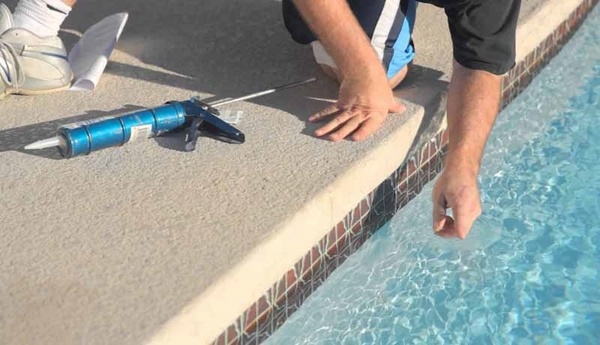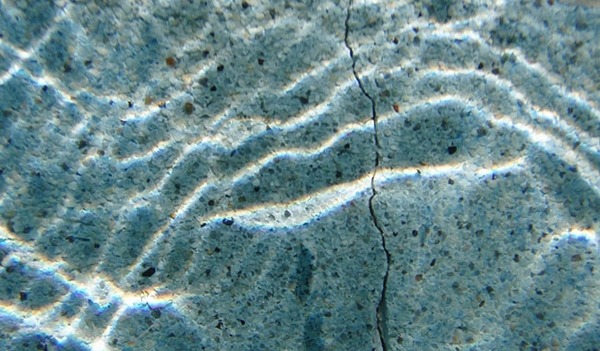Pool leak detection ideas are very useful for pool owners who suddenly find out that the level of water in their pool is decreasing for no obvious reason. First, we need to look at the most important factors that may cause such problems which are not necessarily a technical problem. There are environmental factors like wind, temperature and water temperature which affect an evaporation and the rate of water evaporation will be different depending on the location. In extremely hot days you may lose more water than in an average summer day so before calling an expert, there are some simple things that you can do to determine if your pool is leaking.
The most obvious thing that you need to do is to check for visible leaks – look at all the equipment – filter, pump, heater, pipe valves, fittings, etc. Wet areas around the pool which a not a result of water splashes from kids jumping in the pool may be a result of a leak.
Pool leak detection ideas – the bucket test
One of the easiest and simplest pool leak detection ideas is the bucket test. It will give you a fairly good idea if the loss of water is caused by evaporation or you have a leak problem. This test is based on a simple comparison between water levels in the swimming pool and the bucket. How to make a bucket test? Here is what you need to do:
- Bring the water to normal level. Fill a bucket with water to approximately 2 inches from the top.
- Place the bucket on the first or second step of and make sure that the bucket is immersed in the pool at least five inches. Mark the water level inside the bucket.
- Shut off the pump and mark the pool water level on the outside of the bucket.
- Resume normal pump operation.
- After 24 hours, compare the two water levels. In case that pool water (the mark outside the bucket) is below the water level of the bucket, the pool probably has a leak that needs to be detected. If levels are the same, there is no need to worry, as only evaporation has occurred.
Note that this test is not valid after 24 hours and in case rain falls in the meantime, you should repeat the test. As per experts, the normal evaporation of water is a quarter inch depending on the area conditions – sunlight, humidity, wind, etc. The level of activities may also cause a lower water level.
Pool leak detection ideas – pump on/pump off test
Pump on/pump of is another useful method of the array of pool leak detection ideas. Basically you can combine the bucket test and compare the results for two subsequent days – 24 hours with the pump on and 24 hours with the pump off. Then you can compare the results – When the water loss for a pump on period is bigger than the loss with a pump off period, you may consider a problem with return plumbing leaks.
If the water loss for a pump on period is less than the loss with a pump off period, you may have a problem with the drain plumbing. In case that water loss is the same, whether pump is on or off, the leak problem may be due to liner or fitting, and worst case scenario – a crack in the pool shell.
Pool leak detection ideas – the dye test
When the easy leak detection ideas do not indicate a problem and your pool is still losing water, you can perform the dye test to identify underwater cracks in the shell or fittings. Pool dye testers are a special concentrated dye which holds together under water and is not dissolved. The dye test can be performed in any area of the pool. To perform the dye test, you need squirt a small amount of dye near the suspected leak. Make sure that the water is to its normal level and the pump is off before you make the test. When you squirt the dye to the suspected area of leak it will be drawn out of the pool, if there is a leak problem. You may do the dye test from the deck but sometimes the test has to be performed under water. In case you determine a leak, your pool will need a repair and patching.
You should always keep in mind that these methods may not be good enough to detect a leak so you should turn to professionals for help. Sometimes it could be a plumbing problem, a pump problem or other problem that needs a closer inspection.
How to fix a pool leak?
This is a tough question as leaks can be due to a variety of reasons, not necessarily visible – like a problem with underground plumbing, or air in the pump, for example. Of course, before you start draining the pool or digging around it, you can try some simple solutions which are suitable for various types – vinyl, fiberglass, concrete, gunite – the market offers various kits. For minor problems you can use sealant and epoxies and solve the problem by yourself. Vinyl patches are also an option. They are usually precut and all you need to do is peel the back and stick them to the liner. Vinyl patches can be used on inflatable pools as well.
Make sure that you take care of the leak problem, as the longer it remains untreated, the bigger the problem and the fixing will be much more costly.




















